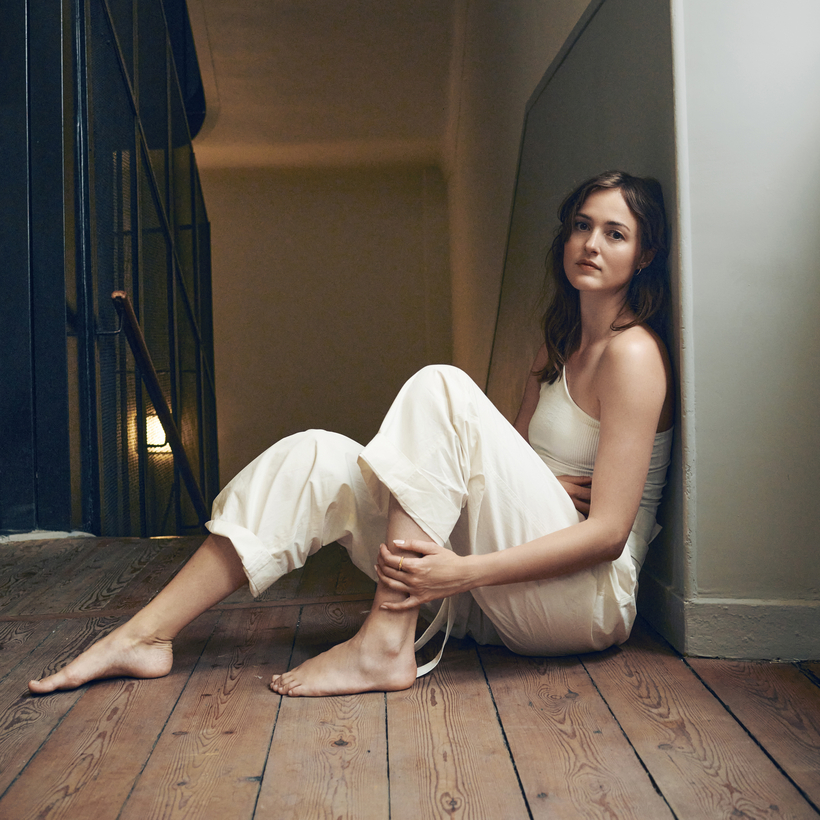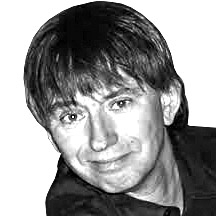The meteorite known as Renate Reinsve, who hurtled out of the Norwegian blue to claim the best-actress prize at the Cannes Film Festival last July, shed some of her light on Manhattan recently. One destination was the Criterion Collection’s film office, where visitors are invited to pick some DVDs from “the closet” to bring home. Reinsve, who chose a Jean Renoir boxed set, Ken Russell’s Women in Love, and Paul Schrader’s Mishima, might possibly have found Aladdin’s cave less rewarding. “I’m so excited,” she said, beaming.
There’s nothing ingenuous about the 34-year-old Norwegian actress, however. As the “face” of director Joachim Trier’s The Worst Person in the World, nominated for Academy Awards for Best International Feature and Best Original Screenplay, she says, “it’s a privilege to have a platform to talk to journalists about things you feel are important, but it’s very exposing, and that’s strange and scary. I’m getting used to it, but I still haven’t landed in this new life I’m living.”

Reinsve was considering quitting acting for carpentry when Trier sent her the script, which he and Eskil Vogt had written for her. Eleven years ago, the screenwriting partners had given her two lines in Trier’s Oslo, August 31st, so she wasn’t about to say, “No thanks, I’m working on some joists.”

A seasoned theater-and-television performer, Reinsve is revelatory in her first lead film role, as Julie, a middle-class Osloite—smart, passionate, droll, capable of cruelty—who enters her 30s not knowing who she is, what she wants to do, or how to accept love.
Like many a millennial deluged with choices, she decides that being a physician, psychologist, or photographer wouldn’t satisfy her, so she gets a job at a bookstore. She also falls for Aksel (Anders Danielsen Lie), a fortysomething graphic novelist, then for Eivind (Herbert Nordrum), a barista her own age. It takes a tragedy to ground Julie emotionally and professionally—not that the movie moralizes about her.
In the sequence that sums up Julie best, she ducks out of Aksel’s book-signing party and finds herself weeping, struck by the sense she’s a stranger to herself. At the wedding reception that she gate-crashes minutes later, she orchestrates a chaste, night-long flirtation with Eivind, at one point sniffing his armpit and at another peeing in front of him. Reinsve makes Julie’s transition from melancholy to mischief-making so natural that her embrace of contradictions is unremarkable.

“She stands on top of the hill and looks on her life down there in the city, and I don’t think she realizes she’s sad before tears suddenly pop out of her eyes,” Reinsve says. “But she doesn’t want to go into what that means for her, so I think on a deeper level it’s more existential. She’s in a really good relationship, and she knows that, so she sneaks into a wedding to destroy her life a little bit by flirting with another guy.” Reinsve laughs. “I don’t think she knows what she’s doing.”
Later on, Julie bites Eivind’s behind. “That was in the script,” Reinsve says demurely.
“The same time Julie was sad, she was happy,” Reinsve continues. “And she felt ugly, beautiful, and charming at the same time. I felt very at home being inside all of that together—not being able to accept herself, feeling she’s the worst person in the world.”
The Worst Person in the World is in theaters now
Graham Fuller is a New York–based film critic

